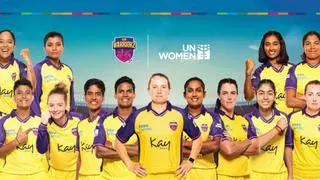An elder statesman of the profession was quoted complaining recently about the manner in which advertising inventory is priced. “Internationally, buyers pay for quality,” he said, “while all that matters to buyers here is volume of audience.”
I can assume that, since the remarks were addressed to fellow members of the content fraternity (this was a Press Club event), this would have been followed by loud applause and much whinging about the philistines who dominate the commercial side of the business. Unfortunately, the grandee in question was unequivocally wrong. There are two polemical positions I have taken in the previous sentence. That he was wrong. And that this was unfortunate.
The ‘quality’ pull Much is made of the Indian familiarity with English. Every once in a while, you read about the hundreds of millions of our fellow citizens who have at least a passing knowledge of the lingua universalis . While this may be true to the extent that you can probably get directions in toota-phoota Angrezi almost anywhere in the country, that’s about the real size of it.
In our endless diversity from Mizoram to Kutch, from Lahaul and Spiti to the Idukki valley, we are far closer to our babel of tongues than to the Empire’s most enduring and lucrative export.
Less than a tenth of India’s aggregate consumption of the print media is in English. Less than a twentieth of television consumption is in English. However, it remains the language of government, business, judiciary and the major professions. “People who matter” think in it, converse in it and consider it their first language, usually ahead even of their (nominal) mother tongues. As decision-makers, they arrogate disproportionate importance to their roles as opinion-formers and early adapters in the marketplace.
It is a natural path from here to privileging people like themselves as advertising audiences. Outcome? Cost per contact for any English media vehicle will be 10 times or more its equivalent in any Indian language. Let me take the example of the news network presided over by our protagonist who shall remain nameless. His Hindi channel routinely delivers a weekly audience 15 times larger, yes 15 times, than his ‘flagship’ English channel. The revenue realisation? The English channel does 15 per cent more than the Hindi. Look at it by way of how audiences are being monetised. The English audience costs 16 times more, unit for unit, than the Hindi audience. Now let us make the entirely inappropriate, arrogant assumption that the English product is refined and ‘high quality’ while the Hindi product is somewhat more “tabloid journalism-esque.” If this does not show that buyers pay for quality, however misplaced, or plain wrong such a perception of quality may be, nothing can.
Missing Middle India Now to the other point. Evidence has been piling up over the years that the consumption-led story that we pride ourselves on has to do with the broad-basing of demand, not its concentration in the upper classes. The upper classes represent a minuscule proportion of consumption demand and much of it will be for what they consider essentials. In formal Economics, this is Inelastic Demand, hindered or stimulated little by absence of active marketing.
The much larger markets in the middle and bottom of “the pyramid,” as Prof CK Prahalad famously described it, are much more sensitive to demand promotion, far more elastic, so a rational marketeer would have much better input/output ratios targeting demand promotion efforts at them. Every time you dismiss Hindi news channels as “ chaddi, janghia, sariya, pan masala and navratna oil ” channels, you reveal your ignorance of the burgeoning demand and, by implication, business opportunity in Middle India. The India that is driving secular consumption growth for the last decade or two. If this is not unfortunate, what is?
While the media definitely play the role of tastemakers to their audiences, their first priority is to inform and entertain. Condescension directed at those who understand good taste differently from the liberal arts-educated, English-speaking elite, is a poor way to steer taste.
(Paritosh Joshi is the principal at Provocateur Advisory, an independent media and communications consultancy. He is also part of the technical committee of Broadcast Audience Research Council India and is the chairman of the technical committee, IRS)








Comments
Comments have to be in English, and in full sentences. They cannot be abusive or personal. Please abide by our community guidelines for posting your comments.
We have migrated to a new commenting platform. If you are already a registered user of TheHindu Businessline and logged in, you may continue to engage with our articles. If you do not have an account please register and login to post comments. Users can access their older comments by logging into their accounts on Vuukle.